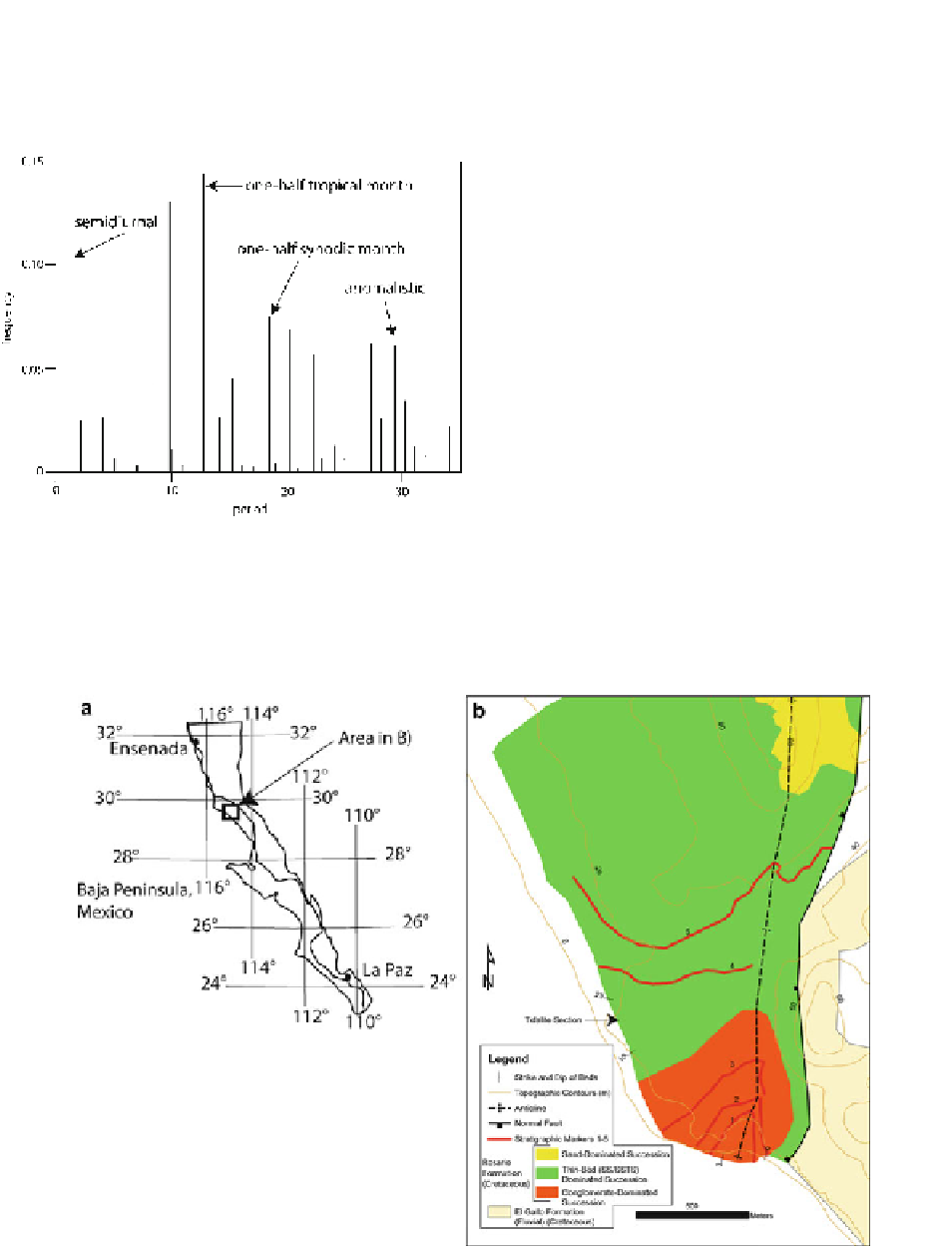Geology Reference
In-Depth Information
around 17, 18, and 34, which may constitute tropical,
synodic, and anomalistic half-months. Detailed
grain-size analysis of some of the tidalite and turbid-
ite intervals showed that tidalite sands tend to be much
better sorted than turbidite sands of the equivalent
thickness and modal grain size.
14.5
Recognition Criteria and
Discrimination of Deep-Water
Tidalites
Tidally-dominated deposits (tidalites) may be confused
on the modern seafl oor and in the rock record with
the deposits of both contour currents (contourites),
and both river-fl ood generated (hyperpycnal) and
surge-generated turbidity currents (turbidites), espe-
cially relatively dilute turbidity currents where bed-
load transport dominates. Table
14.1
presents a
number of criteria that may aid in differentiating
between these types of deposits. Archer (
1996
) sug-
gested the most robust method for distinguishing tidal
deposits from other deposits is with spectral analysis
of lamina thickness patterns to tease out any charac-
teristic cyclicities. However, spectral analysis alone
cannot distinguish between trends forced by the
Earth-Moon-Sun system versus other external
trends such as seasonal variability. In addition, where
Fig. 14.10
Fourier transform (power spectrum) of the Wheeler
Gorge data (see Fig.
14.9c
), showing clustering of frequencies at
the semi-diurnal period, and several other periods, possibly the
tropical, synodic, and anamolistic periods. The frequency clus-
ter around period 28 is particularly well-defi ned
Fig. 14.11
Tidalites from the Upper Cretaceous Rosario Formation in the Cajiloa submarine canyon, Mexico. (
a
) Location map.
(
b
) Geologic map of the fi eld area, showing the section from which these tidalites were measured

